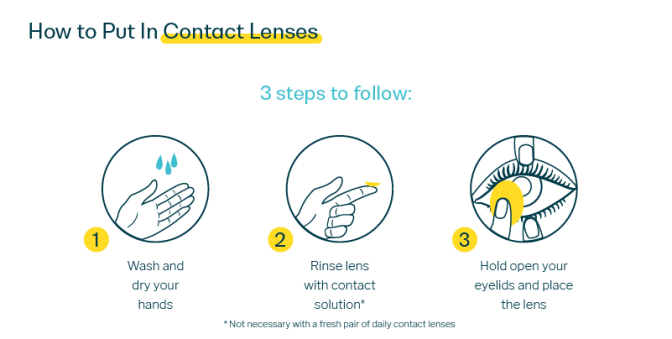Buy one pair of eyeglasses, get a second pair 50% off!
*Restrictions apply. Click here for details.
How To Put In Contacts Safely
Despite their small size, hard and soft contact lenses come with big benefits. According to the CDC, over 45 million Americans¹ wear contact lenses.
If you have just started wearing contacts, putting them in can be a scary task. Learning how to safely put your contacts in is an important lesson, as it decreases your risk of injury or eye infection.
Continue reading to learn how to put in your contract lenses with the eye doctors at Clarkson Eyecare.
Putting In Contact Lenses
When handled properly, contact lenses can be a wonderful and convenient way to correct your vision. Follow these steps to insert contacts successfully.

A Step-by-Step Guide For Putting In Contact Lenses
Removing Your Contact Lenses
Removing your contacts after a long day of wear is quite relieving. Taking out your contacts is easy to do.
Advantages of Wearing Contacts
Finding yourself annoyed with cleaning the fog of your glasses? Or are you tired of having to constantly adjust your frames? Then making the switch to contact lenses might be for you. Here are a few more advantages of making the switch to contact lenses:
Contact lenses make your field of vision wider than glasses do
No objects, like frames or scratches, get in the way of your vision
Ability to be worn in high-intensity activities, such as sports
Freedom to wear them whenever, wherever, regardless of the weather
Disadvantages of Wearing Contacts
Contact lenses aren’t for everyone. Here are some disadvantages of wearing contacts:
Higher risk of developing an eye infection
Not suitable for those with dry eye syndrome
Can irritate your eye
Require a higher level of maintenance in comparison to glasses
Sleeping in your contacts can cause harm
Think You May Need Contacts?

Schedule a comprehensive eye exam today at Clarkson Eyecare to discuss your vision problems with a skilled eye care professional. Find a location near you.
